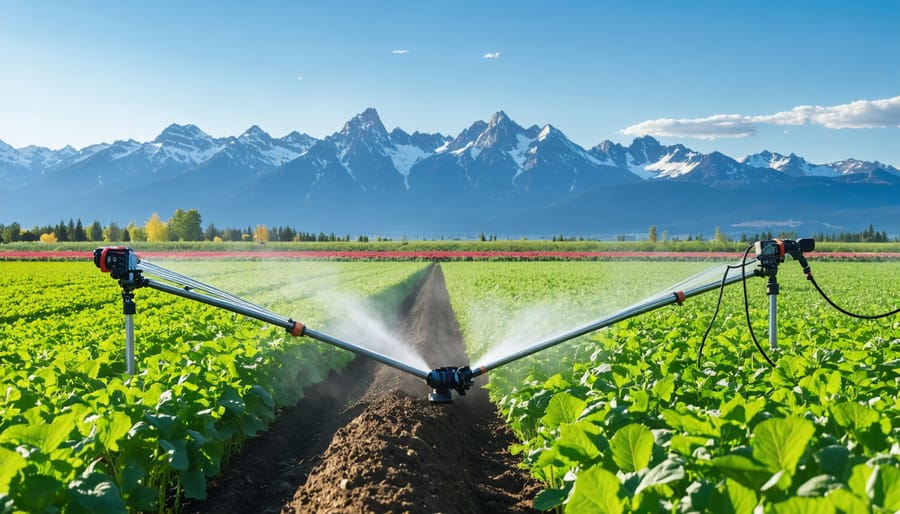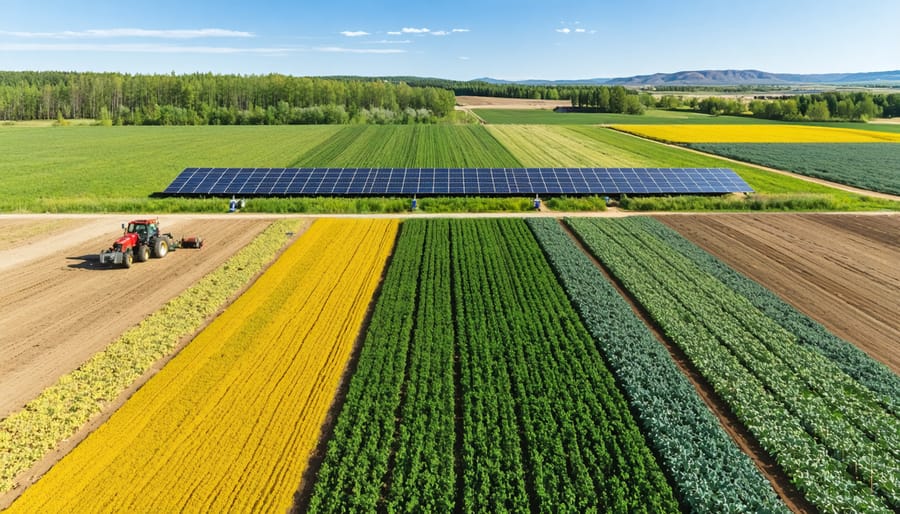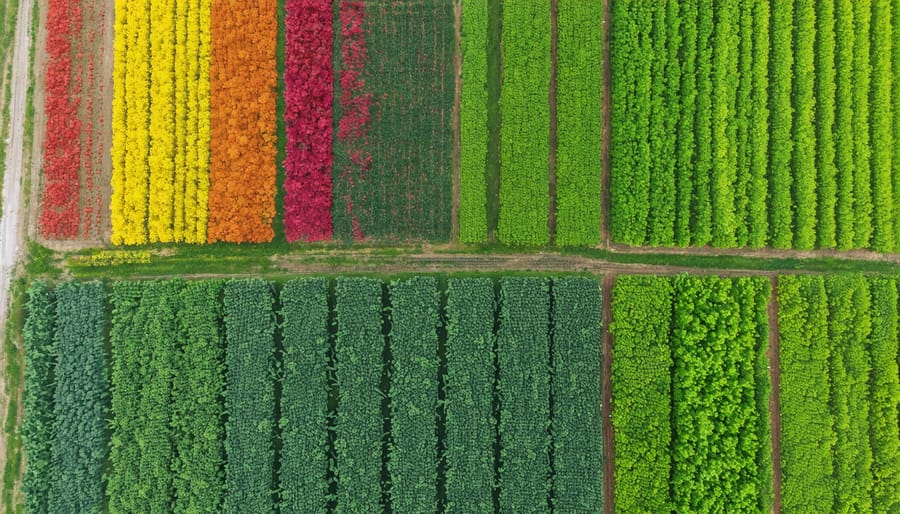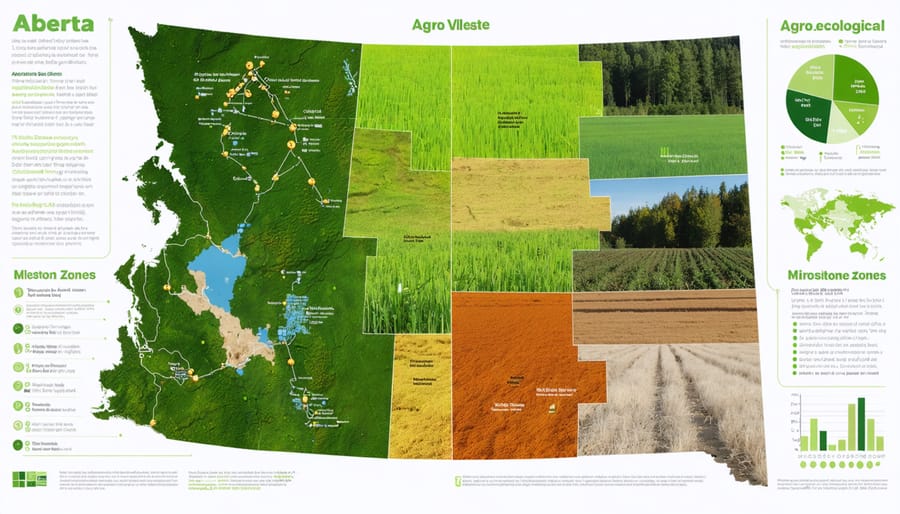Transform your pest control strategy by integrating beneficial insects like ladybugs and parasitic wasps that naturally combat harmful species without chemical interventions. Monitor soil health through regular testing to identify nutrient imbalances that attract destructive pests, particularly as climate challenges in agriculture intensify across Alberta. Implement strategic crop rotation patterns, alternating between pest-resistant varieties and companion plants that naturally repel common agricultural pests while enriching soil biology.
Modern pest remediation demands a holistic approach that balances immediate threat management with long-term ecosystem health. Canadian farmers successfully reducing pest pressure by 60-80% consistently combine mechanical controls, biological agents, and preventive measures rather than relying on single-solution approaches. Digital monitoring systems now enable precise pest tracking across fields, allowing for targeted interventions that preserve beneficial insects while effectively managing harmful populations.
Our research with Alberta farmers reveals that integrated pest management strategies not only reduce crop damage but also strengthen overall farm resilience through improved soil health and biodiversity. This science-based approach delivers sustainable results while maintaining compliance with organic certification standards.
How Climate Change is Reshaping Alberta’s Pest Landscape
New Pest Species on the Rise
As current farming conditions continue to evolve across Alberta, farmers are encountering new pest challenges driven by warming temperatures. Species traditionally found in southern regions are steadily moving northward, bringing fresh concerns to our agricultural communities. The European Corn Borer and Brown Marmorated Stink Bug have recently established populations in areas where they were previously unseen, while native species like grasshoppers are expanding their seasonal activity periods.
Of particular concern is the increased presence of the Spotted Wing Drosophila in berry crops and the Western Bean Cutworm in field corn. These pests are thriving in our longer growing seasons and milder winters, creating new challenges for organic pest management strategies.
Local monitoring networks report that overwintering survival rates of many pest species have increased by 15-20% in the past five years. This trend suggests that farmers need to adapt their pest management approaches, focusing on early detection and prevention rather than reactive measures. Working with neighbouring farms to establish coordinated monitoring systems has proven effective in identifying and addressing these emerging threats while maintaining organic certification standards.
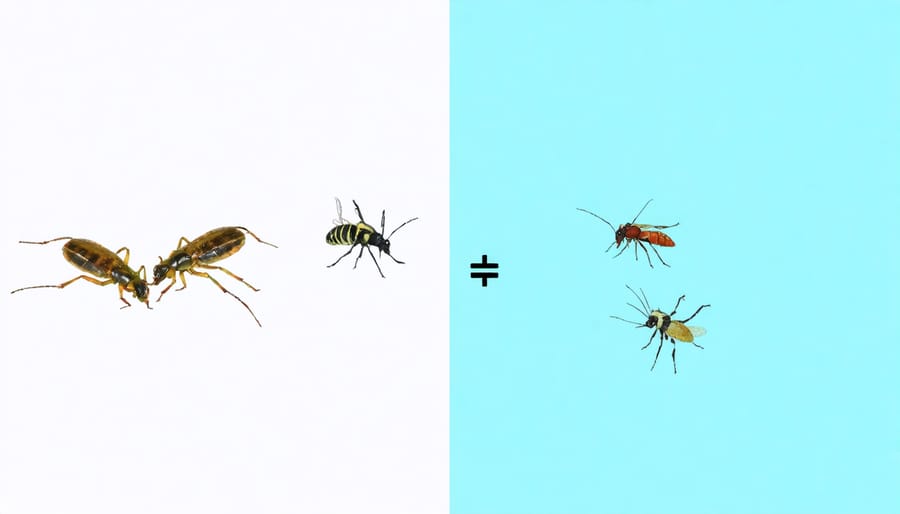
Changing Pest Behavior Patterns
Climate change is significantly impacting pest behavior patterns across Alberta’s agricultural regions. We’re observing longer active seasons for many common crop pests, with spring arrivals occurring two to three weeks earlier than a decade ago. Warmer winters mean higher survival rates for overwintering pests, leading to increased population pressures during the growing season.
Many Alberta farmers report seeing new pest species traditionally found in southern regions. For instance, the cabbage seedpod weevil has expanded its range northward by approximately 200 kilometers in the past five years. Additionally, conventional pest emergence patterns are becoming less predictable, making traditional calendar-based control methods less effective.
Moisture pattern changes are also influencing pest behavior. Extended dry periods followed by sudden rainfall create ideal conditions for certain insect populations to boom. According to the Alberta Climate Information Service, these irregular weather patterns are becoming more common, requiring farmers to adapt their monitoring and response strategies.
To stay ahead of these changes, many successful farm operations are implementing year-round monitoring systems and sharing observations through local agricultural networks. This collaborative approach helps our farming community better predict and prepare for evolving pest challenges.
Climate-Smart Pest Control Solutions
Biological Control Methods
Biological control methods leverage nature’s own pest management systems, working particularly well in Alberta’s diverse agricultural landscape. By introducing or encouraging beneficial insects and organisms, farmers can create a sustainable balance in their fields without relying heavily on chemical interventions.
Local success stories show impressive results with parasitic wasps controlling canola flea beetles and ladybugs managing aphid populations in greenhouse operations. Many Alberta farmers have found success using nematodes to combat root maggots in their cole crops, achieving up to 70% reduction in pest damage.
Predatory mites have proven especially effective in controlling spider mites and thrips in both field and greenhouse settings. For grasshopper management, several producers have successfully implemented strategies using nosema locustae, a naturally occurring pathogen that specifically targets grasshopper populations.
To establish an effective biological control program, start by identifying your target pests and their natural enemies. Consider incorporating banker plants like alfalfa or flowering herbs that provide habitat for beneficial insects. Regular monitoring helps determine release timing and effectiveness.
Conservation strips and hedgerows can serve as year-round homes for beneficial insects, ensuring they’re ready to act when pest populations emerge. Remember that biological control takes time to establish but offers long-term, sustainable pest management while supporting local biodiversity.
For best results, combine biological controls with other integrated pest management strategies, adjusting your approach based on seasonal conditions and pest pressure levels.
Weather-Resistant Physical Barriers
In Alberta’s challenging climate, implementing weather-resistant barriers has become essential for effective pest management. Our research shows that farmers who invest in durable physical controls experience up to 40% better crop protection during extreme weather events.
Innovative solutions like reinforced row covers made from UV-resistant materials can withstand our intense summer sun while protecting crops from both insects and hailstorms. These covers, when properly anchored with heavy-duty ground stakes, have shown remarkable resilience during powerful chinook winds.
Local farmer Sarah Thompson from Lethbridge shares her success with modified exclusion fencing: “We’ve integrated flexible polymer panels with traditional metal fencing. During winter, these panels bend rather than break under snow load, and they’re equally effective against deer and smaller pests.”
Weather-resistant greenhouse screening has evolved significantly, now featuring micro-mesh technology that blocks even the smallest insects while maintaining proper airflow. These screens are treated with anti-ice coatings to prevent winter damage and maintain their integrity year-round.
For root protection, consider installing permanent barrier collars made from recycled materials. These collars extend 15 centimetres above ground and 20 centimetres below, effectively blocking burrowing pests while withstanding soil movement during freeze-thaw cycles.
Remember to regularly inspect and maintain these barriers, particularly after severe weather events. Many Alberta farmers schedule monthly checks during growing season and comprehensive evaluations each spring to ensure their physical controls remain effective throughout the year.
Timing-Based Prevention Strategies
Weather patterns play a crucial role in successful pest management across Alberta’s diverse agricultural regions. By aligning control measures with seasonal forecasts and weather conditions, farmers can significantly improve their pest prevention outcomes while reducing resource waste.
In early spring, monitoring soil temperatures helps determine the ideal timing for preventive treatments. Most soil-dwelling pests become active when soil temperatures consistently reach 10°C, making this an optimal intervention point. During summer months, many farmers in the Peace River region have found success by applying controls during early morning hours when dew is present, ensuring better adhesion of organic treatments.
Local weather stations and agriculture-specific forecasting tools provide valuable data for timing decisions. For instance, many successful operations schedule treatments 24-48 hours before predicted rainfall events to maximize effectiveness. However, avoid applying treatments if more than 5mm of rain is forecasted within 6 hours of application.
Temperature inversions, common in prairie regions, can affect pest activity patterns. During warmer months, many harmful insects are most active between dusk and dawn, making these optimal times for monitoring and control measures. Winter freeze-thaw cycles also impact pest populations, with consistent cold periods being more effective at reducing overwintering pests than fluctuating temperatures.
Consider working with neighbouring farms to coordinate timing strategies, as this community approach has shown increased effectiveness in managing pest populations across larger areas.
Technology-Driven Monitoring Systems

Smart Traps and Sensors
Modern pest management has evolved significantly with the integration of innovative farming technologies, particularly in the realm of smart traps and sensors. These cutting-edge tools are transforming how Alberta farmers monitor and respond to pest challenges.
Motion-activated sensors and AI-powered cameras now provide real-time alerts when pest activity is detected, allowing farmers to respond promptly before infestations become severe. These systems can distinguish between beneficial insects and harmful pests, ensuring targeted interventions that protect valuable pollinators and natural predators.
Remote monitoring stations equipped with temperature and humidity sensors help predict pest emergence patterns, particularly useful for tracking common Alberta pests like grasshoppers and wheat midge. Many of these systems integrate with smartphone apps, enabling farmers to monitor multiple field locations from anywhere on their property.
Pheromone-based smart traps are particularly effective for monitoring moth species that damage canola crops. These traps automatically count captured insects and transmit data to cloud-based platforms, creating detailed pest pressure maps that help optimize treatment timing and location.
Local success stories include the Mackenzie County pilot project, where networked sensor systems reduced pesticide use by 30% while maintaining crop protection effectiveness. These solutions prove especially valuable during Alberta’s short growing season, when timing is critical for pest management success.
Climate Data Integration
The integration of climate data with pest monitoring has revolutionized how Alberta farmers approach pest management. By combining real-time weather information with pest surveillance, farmers can make more informed decisions about when and how to implement control measures.
Local weather stations across Alberta provide crucial data on temperature, humidity, and precipitation patterns – all factors that directly influence pest populations. Many successful farmers in the region use specialized software that overlays this climate information with historical pest occurrence data, creating predictive models that help anticipate potential outbreaks.
For example, canola farmers in central Alberta have reported significant success using climate-integrated monitoring systems to track flea beetle populations. These systems alert farmers when weather conditions align with known pest emergence patterns, allowing for timely and targeted interventions.
Temperature tracking is particularly valuable for monitoring degree-day accumulations, which help predict insect development stages. This information enables farmers to optimize the timing of both monitoring activities and control measures. During the 2022 growing season, farmers using integrated climate-pest monitoring systems reported reducing pesticide applications by up to 30% while maintaining effective pest control.
Prairie farmers can access these tools through various agricultural services and apps that compile data from Environment Canada and local weather networks. Many of these platforms also facilitate community sharing of pest observations, creating a robust network of real-time information that benefits the entire farming community.
Success Stories from Alberta Farms
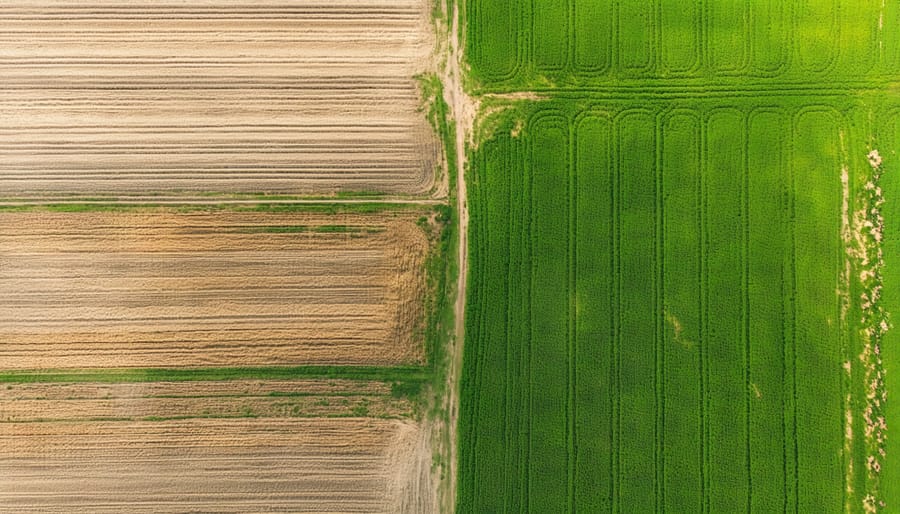
Case Study: Southern Alberta Grain Farm
The Peters family farm, located 30 kilometers east of Lethbridge, offers a compelling example of successful pest management adaptation in Southern Alberta’s changing climate. In 2019, facing increasing pressure from wheat stem sawfly and cereal leaf beetles, third-generation farmer Sarah Peters implemented a comprehensive integrated pest management strategy that transformed their 2,000-hectare operation.
Working with local agricultural extension specialists, the Peters developed a three-pronged approach. First, they introduced beneficial insects by planting pollinator-friendly buffer zones around their wheat fields. These zones now host parasitic wasps that naturally control sawfly populations. Second, they adjusted their seeding dates based on pest lifecycle monitoring, effectively reducing overlap between vulnerable crop stages and peak pest activity periods.
The most innovative aspect of their strategy involved implementing precision agriculture technology to create detailed pest pressure maps. Using drone surveys and GPS-guided sampling, they identified hot spots requiring targeted intervention, reducing pesticide use by 40% while maintaining yield targets.
Results have been remarkable: pest damage decreased by 65% over three years, while soil health improved due to reduced chemical applications. The Peters now share their experience through farm tours and mentorship programs, helping other Alberta grain producers adapt similar strategies. Their success demonstrates how combining traditional knowledge with modern technology can create resilient, sustainable pest management solutions suited to our prairie conditions.
Case Study: Central Alberta Market Garden
Located just outside Red Deer, Sarah and Mike Thompson’s 5-hectare market garden demonstrates how smaller-scale operations can effectively manage pests through diversification and integrated approaches. Their implementation of successful organic farming practices has made them a model for sustainable pest management in Central Alberta.
The Thompsons grow over 40 different crop varieties, deliberately interplanting companions like marigolds and nasturtiums throughout their vegetable beds. This diversity naturally limits pest populations by creating barriers and hosting beneficial insects. They’ve installed habitat strips around field edges, providing homes for natural predators like ladybugs and parasitic wasps.
Their innovative approach includes rotating mobile chicken tractors through harvested areas, allowing poultry to feast on insect pests while fertilizing the soil. During peak growing seasons, they employ row covers strategically, protecting vulnerable crops only when necessary rather than as a blanket solution.
What sets their operation apart is their careful monitoring system. Using smartphone apps and weekly field walks, they track pest populations and crop health, allowing for targeted interventions before issues become severe. This data-driven approach has reduced their pest management costs by 40% while maintaining crop quality and yield.
As Alberta’s farming landscape continues to evolve with our changing climate, implementing smart pest management strategies isn’t just an option – it’s essential for our agricultural future. By embracing integrated pest management, monitoring technologies, and biological controls, we’re building resilient farming systems that protect both our crops and our environment. Remember, successful pest management starts with prevention and requires a community-wide effort. Let’s work together to share knowledge, support sustainable practices, and adapt our approaches as needed. The future of Alberta’s agriculture depends on the choices we make today. By taking these steps toward climate-smart pest management, we’re not just protecting our farms – we’re investing in sustainable food production for generations to come.



